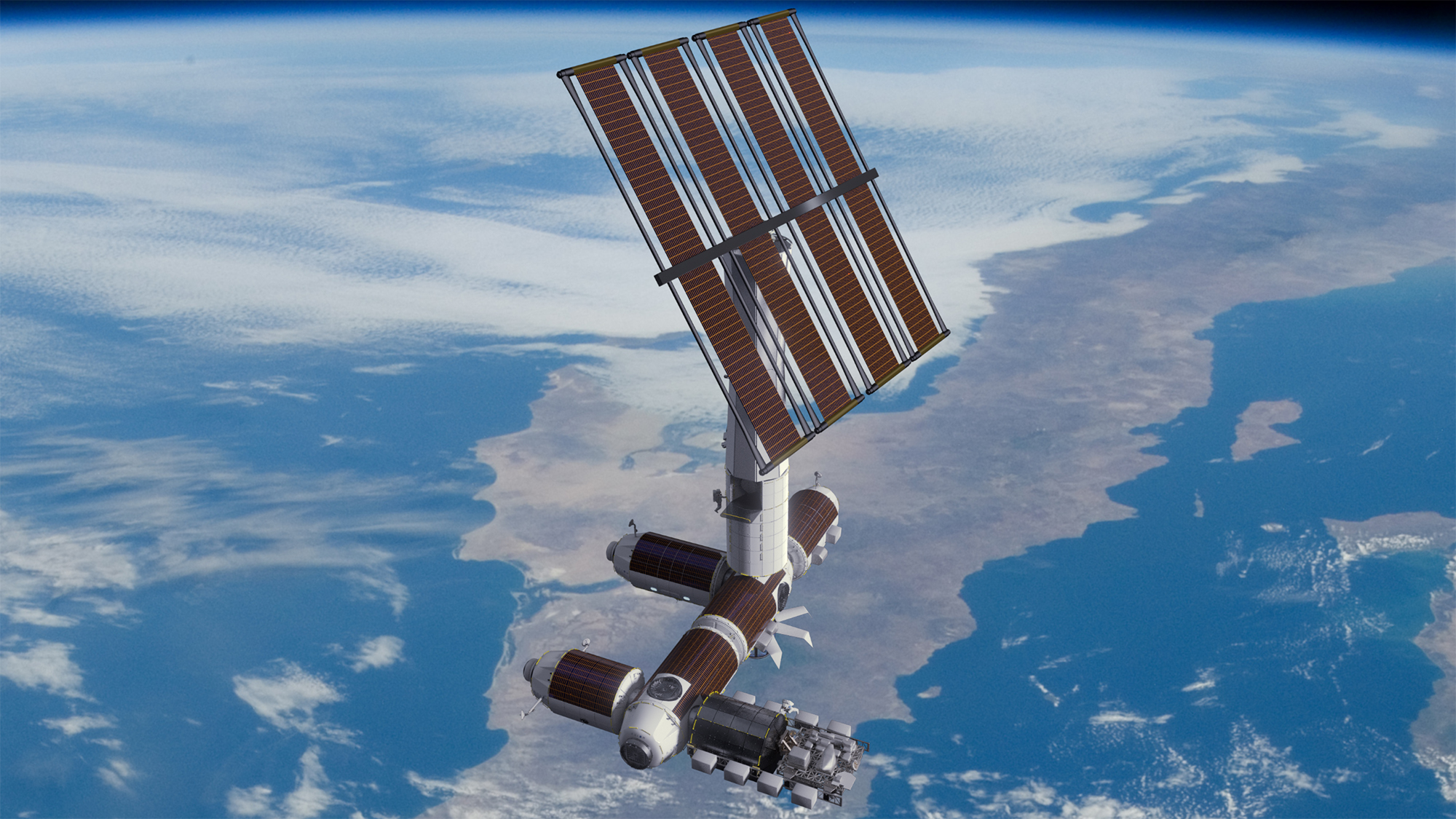Trump administration urges more commercial activities in space

The Trump administration has taken another small step towards its larger leap to commercialize space laboratory activities, even as NASA struggles to put current commercialization plans into place.
A new White House memo released Friday (Aug. 14) said that low Earth orbit research "on new platforms" — commercial facilities that could succeed the International Space Station — should be a priority. It was published as part of the yearly joint initiative to figure out budget priorities in research and development, between the White House Office of Management and Budget and the Office of Science and Technology Policy.
While this year's memo has very similar wording to that released last year, according to SpaceNews, there is one key sentence that shows the new prioritization on low Earth orbit (LEO) research.
"Microgravity research in biological and physical science on new platforms in Low Earth Orbit is important to enabling longer duration human missions in space, and may have practical benefits to life on Earth," states the memo, which you can view here.
Related: The NASA monopoly on US orbital spaceflight is ending
More: Presidential Visions for Space Exploration: From Ike to Trump
Similar to last year, the memo says LEO is part of the Trump administration's larger effort to return humans to the moon's surface by 2024, this time accompanied by a fleet of private vehicles built under NASA's Commercial Lunar Services Program. The moon is positioned as a "proving ground for future human missions to Mars," just like the White House stated in the 2019 memo, but the new memo adds a line referring to "long-term exploration and utilization" as being another reason for exploring the lunar surface.
The new memo has also added "orbital debris management" — or tracking and removing potentially dangerous "space junk" that lingers in Earth's orbit — to the list of items that should be prioritized in research and development. Otherwise, the wish list is very similar to last year's, with items including advanced propulsion and in-situ resource utilization (living off the resources available on another world).
Breaking space news, the latest updates on rocket launches, skywatching events and more!
In line with the administration's priorities, NASA has been moving the International Space Station (ISS) toward even more commercialization than today. The past year alone included a plan for opening the facility up to private astronauts, and the competitive selection of Houston-based company Axiom Space to build at least one habitable private module to attach to the orbiting complex. This new work adds to ongoing efforts to fly commercial experiments on the ISS as part of an agreement between NASA and the Houston-based aerospace company Nanoracks.
Related: The International Space Station is open for commercial business
Congress has been cool to NASA's commercialization efforts to date. In fiscal year 2020, Congress appropriated $15 million for LEO commercialization, only a tenth of the $150 million that NASA requested, SpaceNews said. For fiscal year 2021, NASA once again asked for $150 million, but the House spending version of the bill has only authorized $15 million. (The Senate has not yet finalized its version.)
Separate from research and development activities, NASA has pushed up its private vehicle use on the ISS in recent years. This year, the SpaceX Crew Dragon Demo-2 mission successfully flew the first commercial crew to space and home again, capping more than a decade of development and testing; Boeing's new Starliner astronaut taxi has been tested in space on a single uncrewed mission, but faced several problems requiring further development.
The ISS also regularly accepts deliveries from private taxis from SpaceX and Northrop Grumman under commercial resupply agreements; a new agreement will soon add Sierra Nevada Corp.'s Dream Chaser to the fleet of available cargo ships. The first launch of the Dream Chaser spaceship "Tenacity" will be in late 2021.
Follow Elizabeth Howell on Twitter @howellspace. Follow us on Twitter @Spacedotcom and on Facebook.

Elizabeth Howell (she/her), Ph.D., was a staff writer in the spaceflight channel between 2022 and 2024 specializing in Canadian space news. She was contributing writer for Space.com for 10 years from 2012 to 2024. Elizabeth's reporting includes multiple exclusives with the White House, leading world coverage about a lost-and-found space tomato on the International Space Station, witnessing five human spaceflight launches on two continents, flying parabolic, working inside a spacesuit, and participating in a simulated Mars mission. Her latest book, "Why Am I Taller?" (ECW Press, 2022) is co-written with astronaut Dave Williams.
